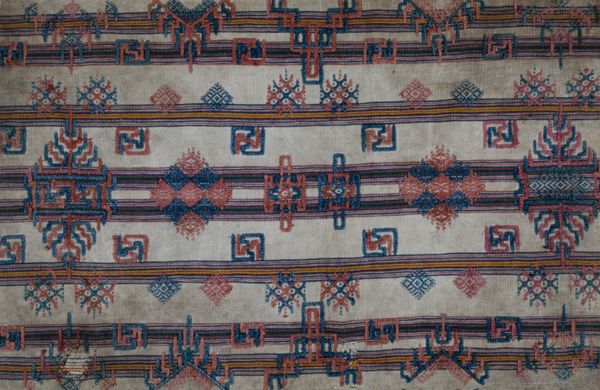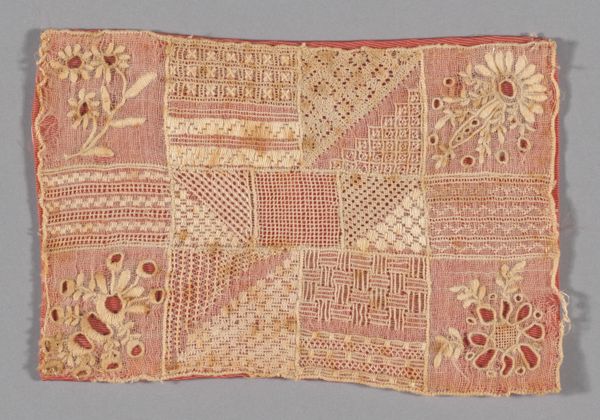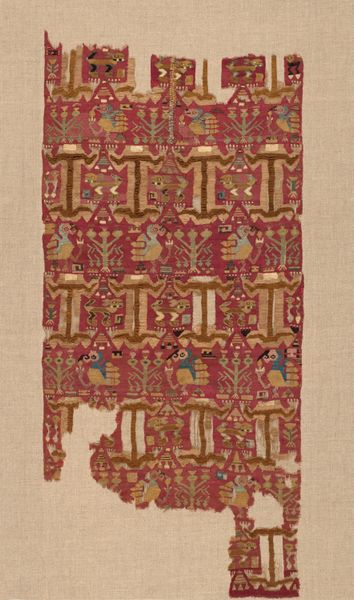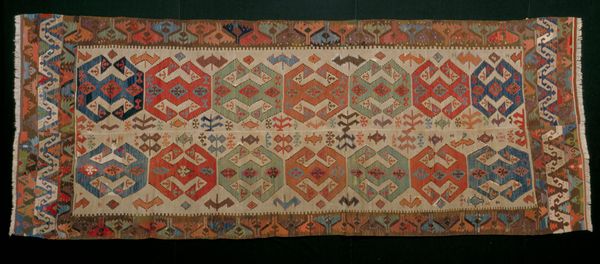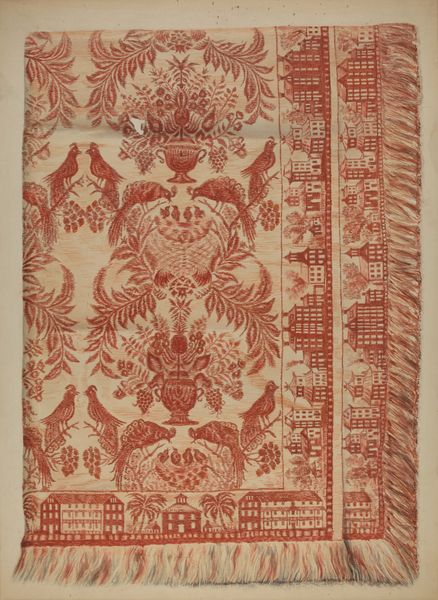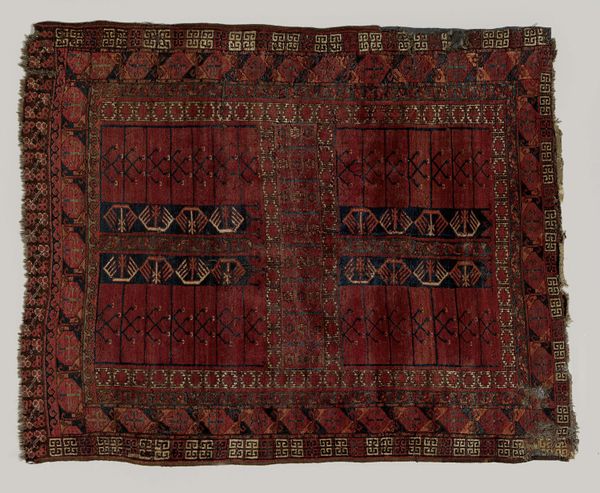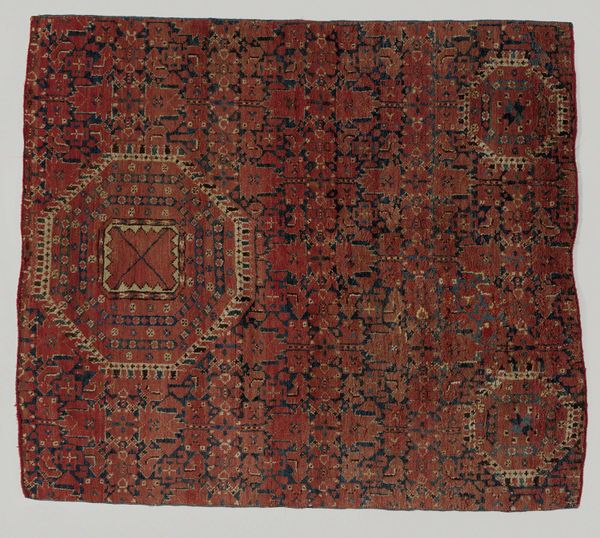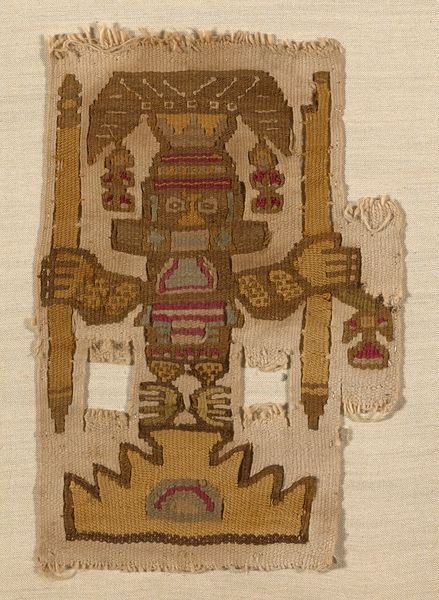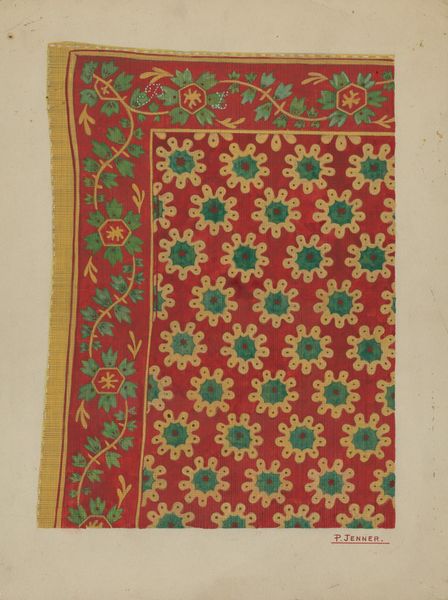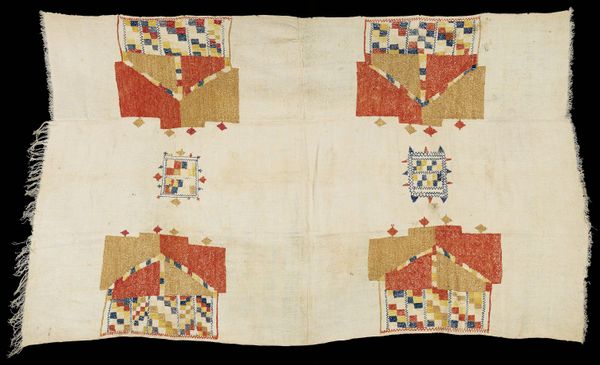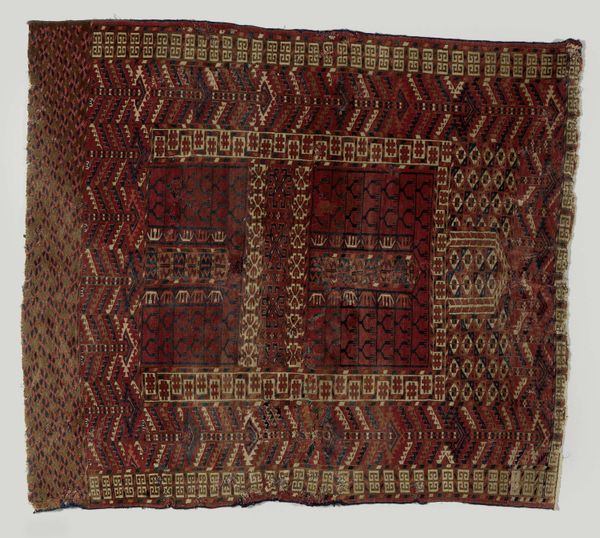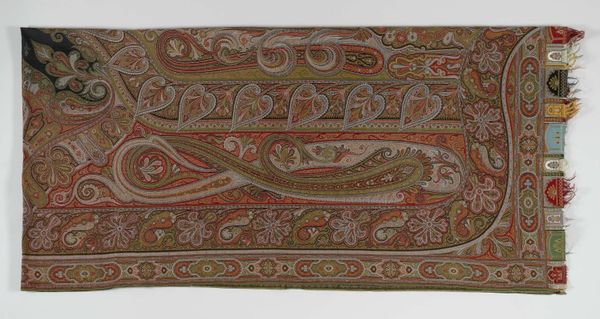
fibre-art, textile, cotton
#
fibre-art
#
textile
#
pattern making
#
fashion and textile design
#
pattern design
#
fabric design
#
repetition of pattern
#
regular pattern
#
pattern repetition
#
cotton
#
textile design
#
imprinted textile
#
layered pattern
Dimensions: 52 1/2 x 60 in. (133.35 x 152.4 cm)
Copyright: Public Domain
This wrapping cloth, or bunti, of undyed cotton embroidered with silk, was made by an anonymous member of the Kanbi caste in Gujarat, India. The Kanbi community, primarily agricultural, has a rich textile tradition, with women creating elaborate embroideries for ceremonial and domestic use. Looking at the cloth, consider how these textiles served as a form of cultural expression and identity for women within the Kanbi community. The geometric patterns and vibrant colors are not only aesthetically pleasing but also carry symbolic meanings, reflecting the social status, religious beliefs, and personal experiences of the women who created them. The act of embroidery itself becomes a form of resistance, preserving cultural traditions and asserting agency in a patriarchal society. Imagine the time and skill required to create such a piece, the conversations and stories shared among the women as they worked together, and the pride they felt in their craft. The bunti becomes more than just a functional object; it embodies the collective memory and cultural identity of the Kanbi community.
Comments
No comments
Be the first to comment and join the conversation on the ultimate creative platform.
